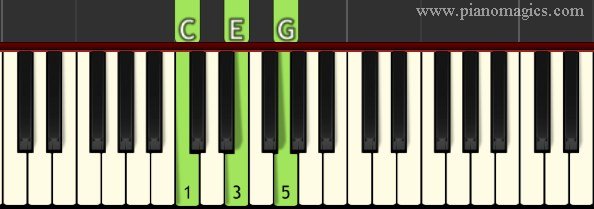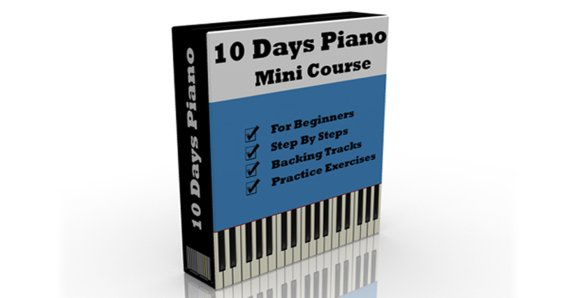Sharing Is Caring
0
Total
Shares
What is Music Balance ?
In the 1st class I had with my current teacher, he said one term that I remember
every time I play. It summarizes all probably the most important musical concepts I’ve learned with him during the past years:
“Music is the balance between creating Tension and Relief” Yes, this powerful, but simple. Just think about a juggler keeping everything moving smoothly through the air. We feel wonderful when all the objects are moving altogether, and we feel thrilled to watch the juggler. We also feel relieved when the juggler manages to bring his act to a close by masterfully reducing and then stopping the objects’ travels. So, you say… Pravin, we’re talking about tunes not juggling.
Q: What do you really mean by tension and relief in tunes?
I think it would be better for you to try things out with it: go get any of your favorite songs, no matter what style they are, Ready? Follow along with the next paragraphs. If you listen carefully, you’ll discover that there are moments in the music where tension is building up and then finally finding release or a resolution. (Think about how you felt when you thought about the juggler keeping all the things in the air, and then gradually bringing each one to a stop.) You may identify this same effect many times during the songs, some resolutions being stronger, and others weaker. In the last passage of the song that you’re playing, you’ll probably feel the strongest sensation of tension and most definitive resolution, marking the end of the track.
This equilibrium between tension and relief is typical to almost all audio. However, it will be very clear for you to realize it in most classical-music, as it’s usually built of basic chords, but you may also perceive it in Pop or Jazz pieces or songs, if you’re able to get through the more complicated chord formations. Now imagine a music-piece that has too much tension and only clashing sounds, but no release. The music-piece will probably not be very appealing to most, as it will feel quite unpleasant and disturbing, since the tension builds up and never resolves. (Imagine a juggler tossing all his objects into the air at once, but then letting them all drop to the ground at once…. there would be much tension, and then disappointment because he was not successful in skillfully finishing his juggling act.) Now consider the exact opposite, a piece without any clashing sounds, and no tension at all whatsoever. The music-piece will probably sound pleasant to the ear, but will most likely be extremely boring! For a listener, pleasure is produced each time tension is resolved, so a piece without any tension usually results in a boring composition. (Imagine watching our juggler rolling his objects along the floor, but never juggling at all.)
In this way, one of the biggest secret of what makes a music-piece interesting and pleasant to the ear is: Finding the correct balance between creating tension and relief. This approach will guide us through all of our lessons. It will let you discover more about the music you’re already playing, while opening your path into improvising and composing.
Nevertheless this is not a mathematical formula, there is no formula which will tell you what combination of chords and melody is used to produce the exact needed amount of tension or release. Imagination plays a major role in composing and improvising; nevertheless, it’s important to have the right resources, the right tools and important information to help you make composing and improvising an easier task, and thus let your creativity flow by using the right information. In this way, if you get to know which chords or notes in a melody will produce tension or relief, you’ll be much closer to finally playing on the piano what was initially on your mind.
That is what we are going to learn in the following chapters. We’re first going to learn how to build the major and minor chords with intervals and then head off to review the different intervals to see if they more likely produce tension or relief.
As you already know, intervals form chords and scales, so learning the nature of intervals will also let you predict which chords will most likely produce tension or relief, and the same is true for your melody line. It’s important to stress that the principle of tension and relief is also relative to the context of the sound. In this way, if you play a very tense chord, and then play a less tense chord, you will still feel a sensation of relief, even though the second chord is still causing some tension and has not yet completely resolved. Let me show you exactly what I am talking about. Let’s play a very simple progression of chords. Play the following chords in order:


Don’t worry about the chord names yet. Just play and feel the sound. As you can hear, the first chord seems to contain no tension, then the tension seems to build up with the second chord, and it’s finally resolved in the last chord, producing a sensation of relief. So, in this case, there is a clear distinction between the middle chord and the other two, with the middle chord being the one that has the strongest tension of all. However, let’s see another example where we actually have different degrees of tension, and tension builds up and then slowly resolves, each time producing a new sensation of relief to the listener. Play the following chords on your piano:




In this instance, you actually feel that the second chord produces the most tension, and then it resolves to the third chord, lowering the tension level and thus producing a release. However, the third chord is the same one that was producing the tension in the 1st example, and is now causing a sensation of relief as it produces less tension than the previous one. Lastly, the last chord resolves all the tension into a state of complete relief. If we could picture the tension-level across time, we would have a graph that would start off at zero, then go to a high peak, and then slowly return back to zero. Actually, you could do that with every song you listen to (not just these three or four chords) and you’ll discover that usually, once the tension level reaches its highest point, you’ll be reaching the climax of the song or melody. You can see how this concept plays a significant role in all tracks. With these examples, I hope you have also noticed that the division is not black & white, but that the different intervals and chords produce different levels of tension and relief. The overall sensation of each of the sections of your song will vary depending on how smoothly and quickly the tension is built up and how smoothly the tension is resolved, to produce a release. Thinking about the concepts of tension and release will help you understand what you’re playing much better, and will help you to get started with composing and improvising, To make things easier and practical we’re just going to divide the intervals into: ‘tension producing’ and ‘non-tension producing’ intervals for the most common cases. In the upcoming lessons, we’ll see that this can be studied in a deeper way using terms such as consonant, dissonant, unstable, ambiguous, and many other classifications and considerations. However, I first would like you to get all the practical data, so you can start applying this on your piano, before getting technical. Now it’s time to take a look at some intervals and see all this in action as we learn how to master the Major and Minor Triad chords.
[re_engager id='802']

Piano Lessons
Recent Posts
- Now You Can Download Your Piano Runs And Fills Pdf Very Easily
- Here Is Your Raag Yaman Bandish Notation Pdf – Ready To Download
- Learn This Mashup Of 6 Old Hindi Melodies On Piano To Win Audiences Heart
- How To Request Song Notes And MIDI File
- Get Your Clocks Coldplay Piano Sheet With Note Names
- Get Your The Scientist Piano Sheet With Note Names
- Get Your Away In The Deep Forest Sheet Music With Note Names
- Get Your Aura Lee Sheet Music With Note Names
- Get Your Au Clair De La Lune Sheet Music For Piano Along With Notes
- Get Your a Tisket a Tasket Sheet Music for Piano Along With Notes
- Get Your Beethoven Fur Elise Sheet Music For Piano Along With Notes
- We Three Kings Piano Sheet Music along with Notes
- Jana Gana Mana Piano Notes -The Easy Way
- One Click Downloadable Piano Lessons In Hindi PDF
- List Of Easy Piano Songs To Play For Beginners
- Piano Lessons In Hindi – 30 Videos
- Take A Piano Quiz
- Building the Major and Minor Triad Chords – Part 1
- The Relationship Between Intervals and Chords
- The Major and Minor Third Intervals
- The Perfect Fifth Interval Part 2
- What Is A Fifth – Interval
- The Octave Interval
- What is Music Balance
- The Building Blocks Also Known As Music Basics
- The Need For Memorizing Scales and Chords
- Overcoming Frustration of playing Piano and Keyboard
- The Reason Why Are Music Scales Important In Music
- What is a Interval in Music
- What is a Chord – A Detailed Explanation
- 4 Steps to Learning How to Play Any Song on the Piano
- What is a scale in music – Get familiar with musical scales
Sharing Is Caring
0
Total
Shares